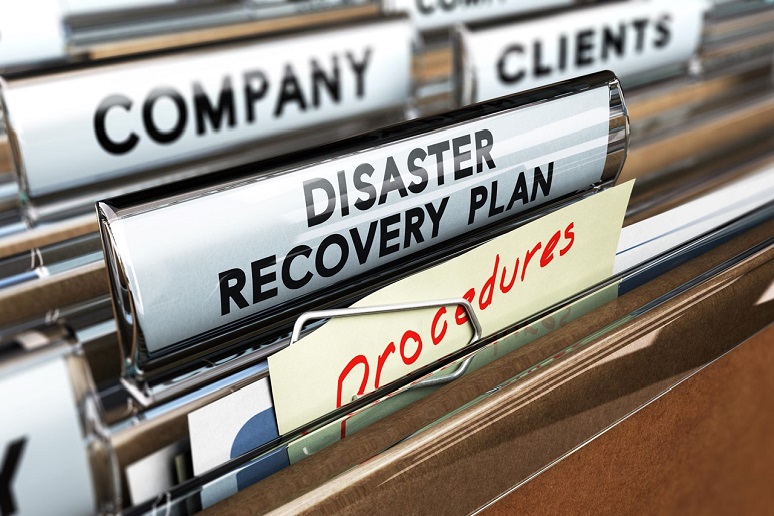The expansion of work from home (WFH) has created a condition where business productivity, which used to be in the office, is now more vulnerable for employees than ever. That’s because the remote worker may have little or no disaster recovery plan to execute. Also, IT staff aren’t usually disaster recovery (DR) experts. Here we’ll take a look at examples of failure scenarios, solutions, and how to justify disaster recovery as an investment.
Failure Scenarios
There’s always a chance that the data center won’t work due to hardware or software failures. Data center failure can also result from a power outage, floods, earthquakes, fires, Internet outage, and private network access. Planning for a disaster and the recovery of service is a multi-dimensional effort. It’s imperative to determine what’s under your control and what’s unpredictable. How much DR can be outsourced vs. what you can do yourself? Do you need 99.99% of uptime, which is equivalent to 4.33 minutes of unplanned downtime per year? Is this a cost, or can there be a return on investment (ROI)?
How Bad is Downtime?
According to the
ITIC 2019 Global Server Hardware, Server OS Reliability Survey found that one hour of downtime costs 98% of firms surveyed at least $100,000, and 86% of businesses reported that one hour of downtime is $300,000 or higher. ITIC’s study indicates that 34% say the cost of a single hour of downtime can reach $1 million to over $5 million. The Ponemon Institute reported that the average cost of data center downtime was $9,000 per minute in 2019.
What I find surprising is that none of these reported costs include litigation, fines, as well as civil or criminal penalties that are due to lawsuits or regulatory non-compliance. The cost to regain the customer is also not included in the report. A single hour of downtime for a small to medium-sized business that occurs during peak usage hours disrupts productivity. During a critical business transaction, this can put them out of business.
Disaster Recovery Planning
A disaster recovery plan (DRP) and solution can be considered a form of self-insurance. But the goal is not to use it. As with insurance, you’ll want to calculate the fair price of a premium. You’ll also need to discover the balance of the total DRP out-of-pocket costs and the probability that an event will occur. You need to calculate the costs of different failures, so you can provide financial justifications for your DRP solution. Some questions to answer are:
- What’s the acceptable recovery time objective (RTO), the time from the moment of the disaster to when production operations begin? It can be anywhere from 24 hours to zero time.
- What’s the recovery point objective (RPO), and how much data can the business afford to lose?
The total cost of ownership of the DRP solution grows exponentially when the RTO is shorter. Identify and quantify the losses caused by a disaster to estimate the break-even point of downtime vs. the cost of the DRP solution.
Justifying Disaster Recovery as an Investment
As mentioned above, there many forms of IT failure, including storms, blackouts, equipment failures, human errors, hacker attacks, or conflicts. When looking at the number of possible disasters, the probability increases considerably.
The greater the difference of the loss cost vs. the DR solution cost, the greater the positive ROI. You can use Microsoft Excel to calculate your annual rate of return.
What May Be Missing From the DR Solution?
The DR solution you develop or outsource may not include all of the potential problems that may occur. Since it’s you likely have UC or CCaaS offerings, it’s then incumbent for you to explore the cloud providers’ DR solutions. Look for these exclusions when shopping around:
- Loss of local power
- Weather-related conditions (flood, fire)
- Network access and network availability
- Hacker and terrorist attacks
- Employee errors
- Software bugs
- Earthquake
- Legal actions stopping the IT operation
The Rise of Disaster Recovery as a Service (DRaaS)
The Gartner Report “
How to Determine If DRaaS Saves You Money,” provides an analysis of disaster recovery as a service {DRaaS). DRaaS manages server image and data replication, operates book creation, delivers cloud-based automated failover and failback, as well as network configuration during recovery operations. Ensure that all components of the service are included in the service offering contract. There should be a standardized service-level agreement (SLA) for recovery.
Read the SLA carefully, looking for exceptions or vague conditions. Make sure you know what the provider does and doesn’t cover. The DRaaS cost estimate can be used as a baseline for a low-cost DR solution and to compare to other DR solutions, including a DIY version.
The primary challenges in evaluating a DRaaS are:
- Not all advertised DRaaS are authentic DR solutions which can make comparisons and evaluation difficult.
- Costs and capabilities remain when deploying DRaaS, which presents a wide range of variables.
- DIY DR-related costs may be difficult to quantify.
Justifying a DR solution should include an ROI analysis that provides an objective argument for investment. The executives who will approve the DR investment need to know what the worst-case scenarios are. Remember that the business is at risk, especially if it’s located in areas prone to natural failure conditions.










